Malolactic Fermentation is the conversion of Malic acid to Lactic acid in wines, but that is not all that is happening. Fred Scherrer of the Scherrer Winery gave us a detailed description of this process.
Author: Judi Scherrer
Was that a marathon or a sprint?
Instead, we saw a harvest season that in the beginning appeared very much like 2013 – early and compressed. However, it turned out to be very evenly paced and without undue crunch of time. Once again, it allowed me to focus on ‘outdoor things’ like sampling vineyards and planning the harvesting order rather than being stretched thinly between that and managing and performing ‘indoor winemaking things’ at the same time.
Pinot Noir Harvest: Sonoma 2013 – Gunsalus Vineyard
What is a day at a winery like during harvest? Fred Scherrer of the Scherrer Winery in the Russian River Valley walks us through his day, from a very early, pre-dawn alarm clock, all the way through bringing grapes into the winery and processing them.
Home Wine Making: Nutrient Additions
What nutrients are added to fermenting wines? Winemaker Fred Scherrer talks about why nutrients are added and what is added to the fermenting juice to help the wine go dry.
Home Winemaking: What is the ideal temperature for fermenting grapes?
What is the ideal temperature for fermentation of grapes into wine? Winemaker Fred Scherrer talks in detail about how he handles the energy that is created as yeasts eat sugar and create alcohol. This is intended to be helpful to all winemakers, but is part of our home winemaking series.
Wine Education 101: Fred Scherrer describes Zinfandel
What is Zinfandel? Winemaker Fred Scherrer, whose family first planted Zin in the Alexander Valley in the late 1890’s talks about the red and blue fruits that this grape can have, as well as the sort of foods that he likes to eat with Zinfandel.
Mixing it up
One of the things I love about Sonoma County is the complexity created by the wrinkled nature of our landscape with its myriad of soil pockets and differing effects of the Pacific Ocean fog. In a given vintage, even in a relatively small vineyard the size of my Dad’s, the same variety can express itself quite differently.
What are the greatest challenges for home winemaking?
What challenges does the home winemaker face? We asked Fred Scherrer of the Scherrer Winery and he detailed the problems that working on a smaller scale might create. He cites temperature in regards to fermentation and the amount of oxygen that comes into contact with a mass of grapes.
Home winemaking: How to fix hydrogen sulfide (H2S) problems
What should a home wine maker do if the wine smells like rotten eggs and has a problem with Hydrogen Sulfide (H2S)? Fred Scherrer of the Scherrer Winery explains how low nutrients leads to the build of of H2S and what can be done to help. He suggests using copper, but warns that it is not a perfect fix.
Winemaking: Choosing native or introduced yeasts for fermentation
How do you start the fermentation of grapes to make wine? Winemaker Fred Scherrer talks in detail about how native and commercial yeasts interact in the fermenter. This is part of a series of questions we asked Fred intended for home winemakers and professionals alike.

